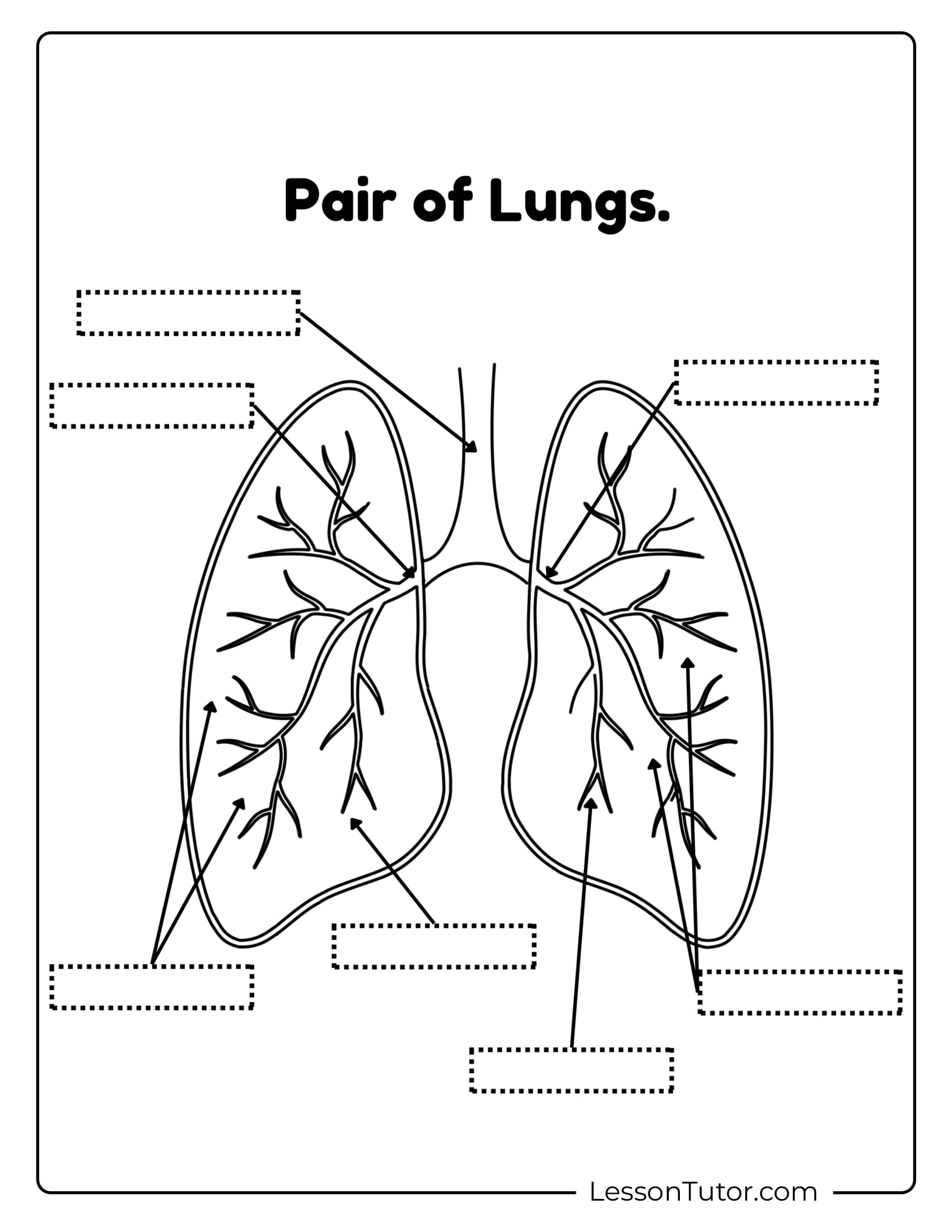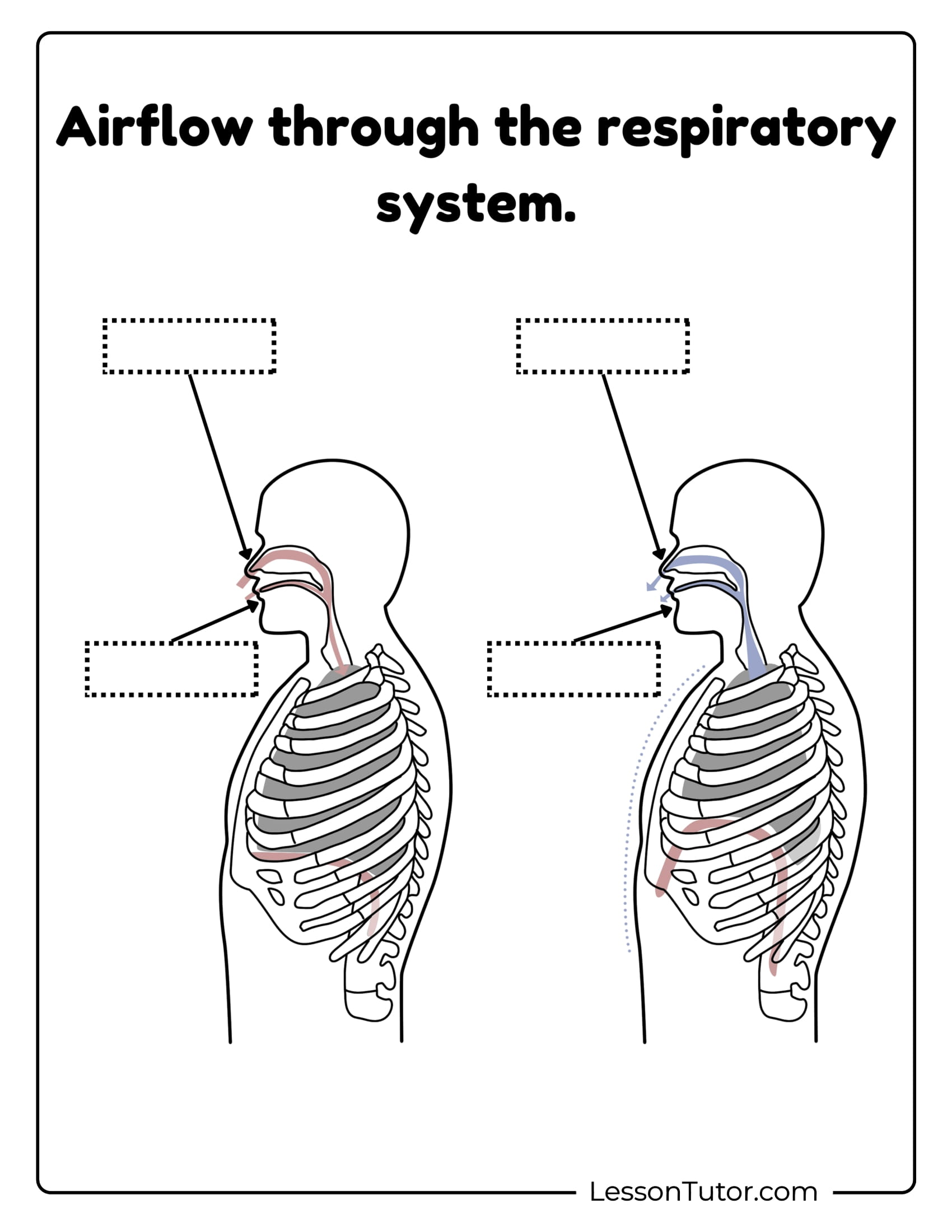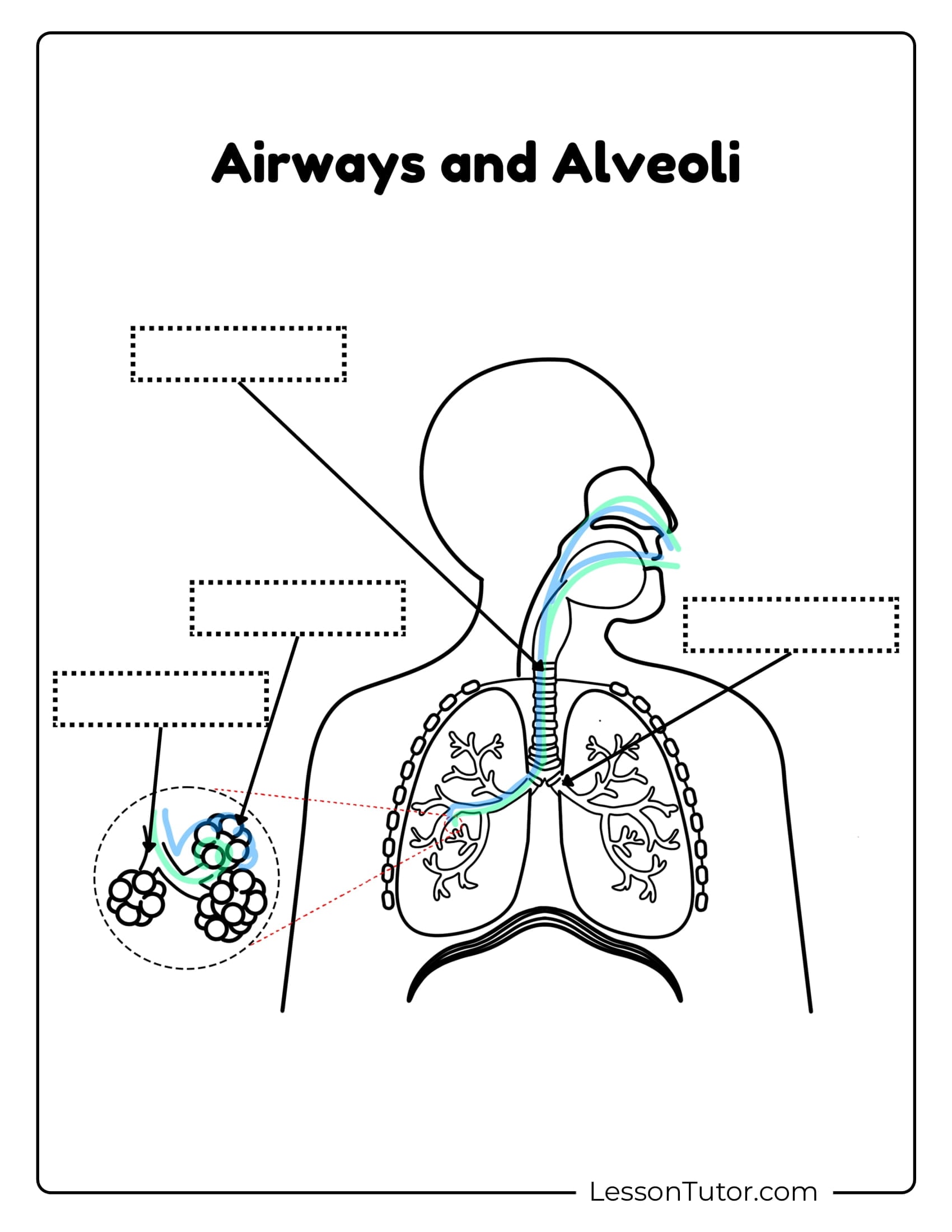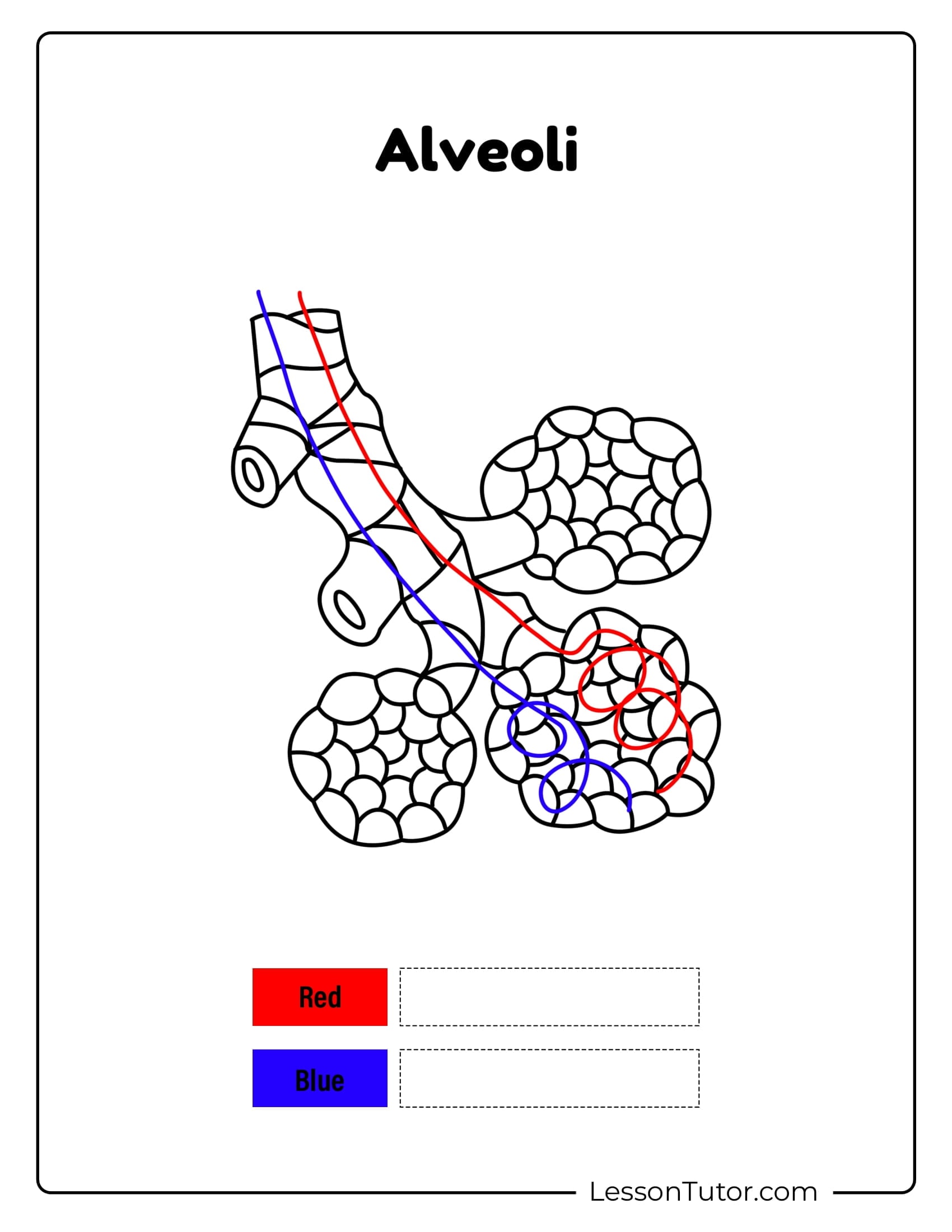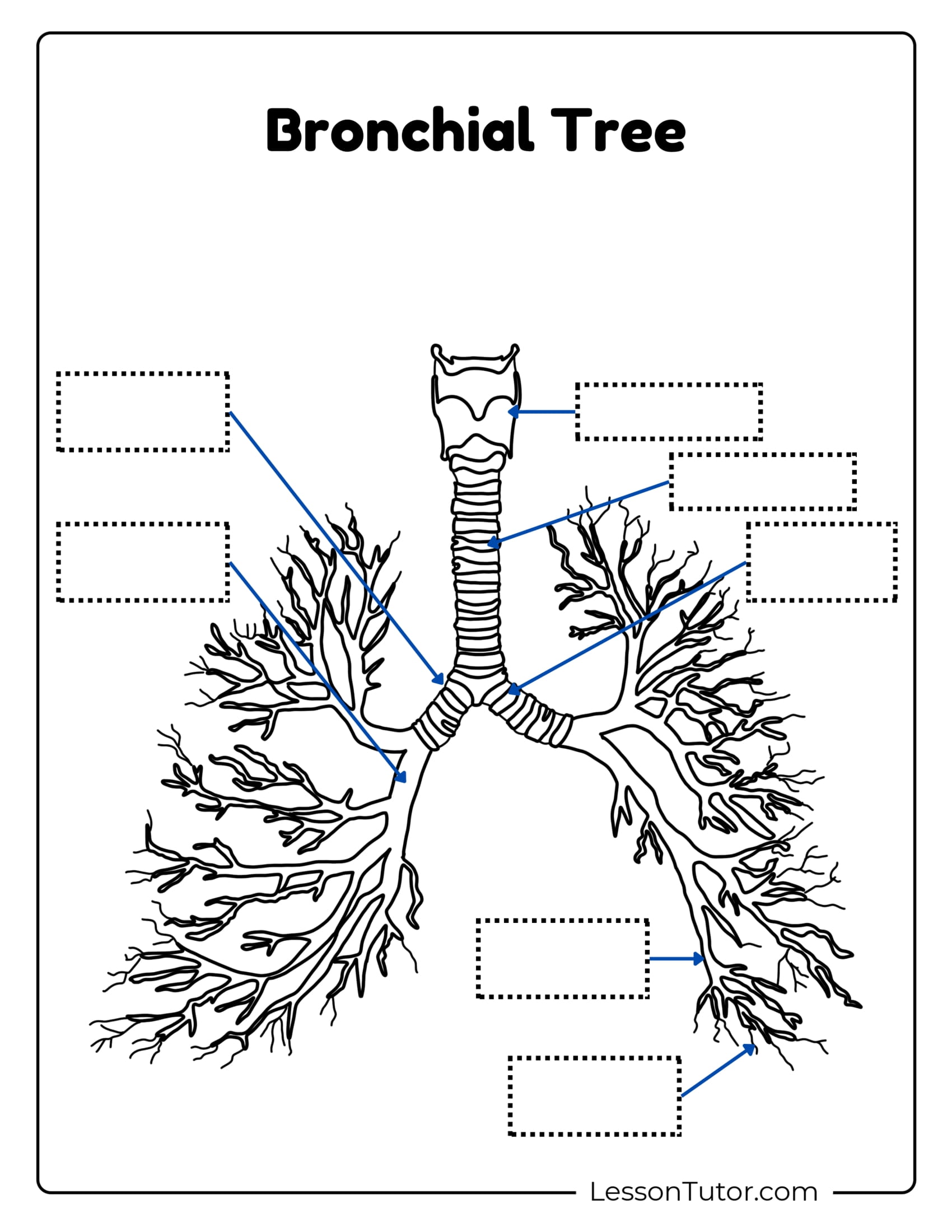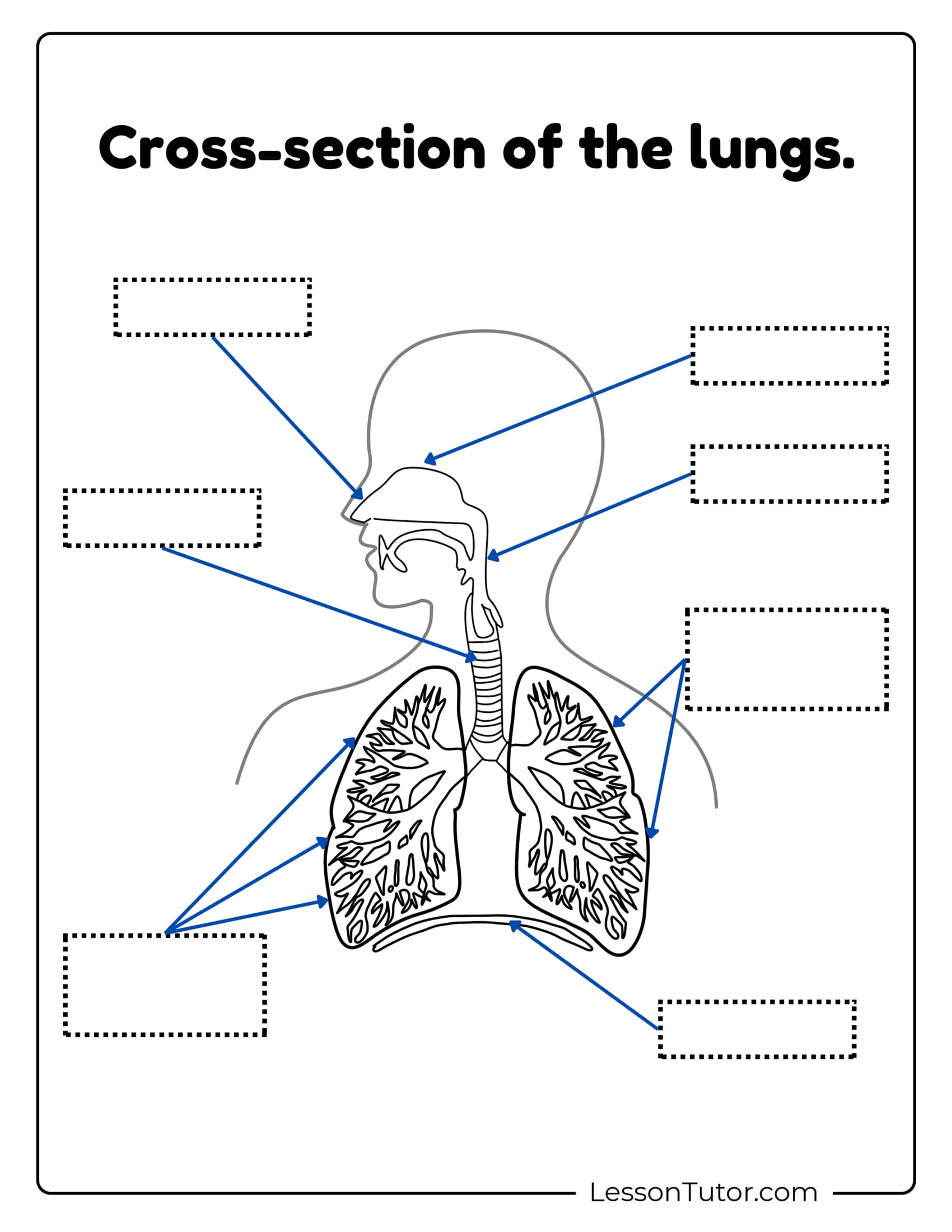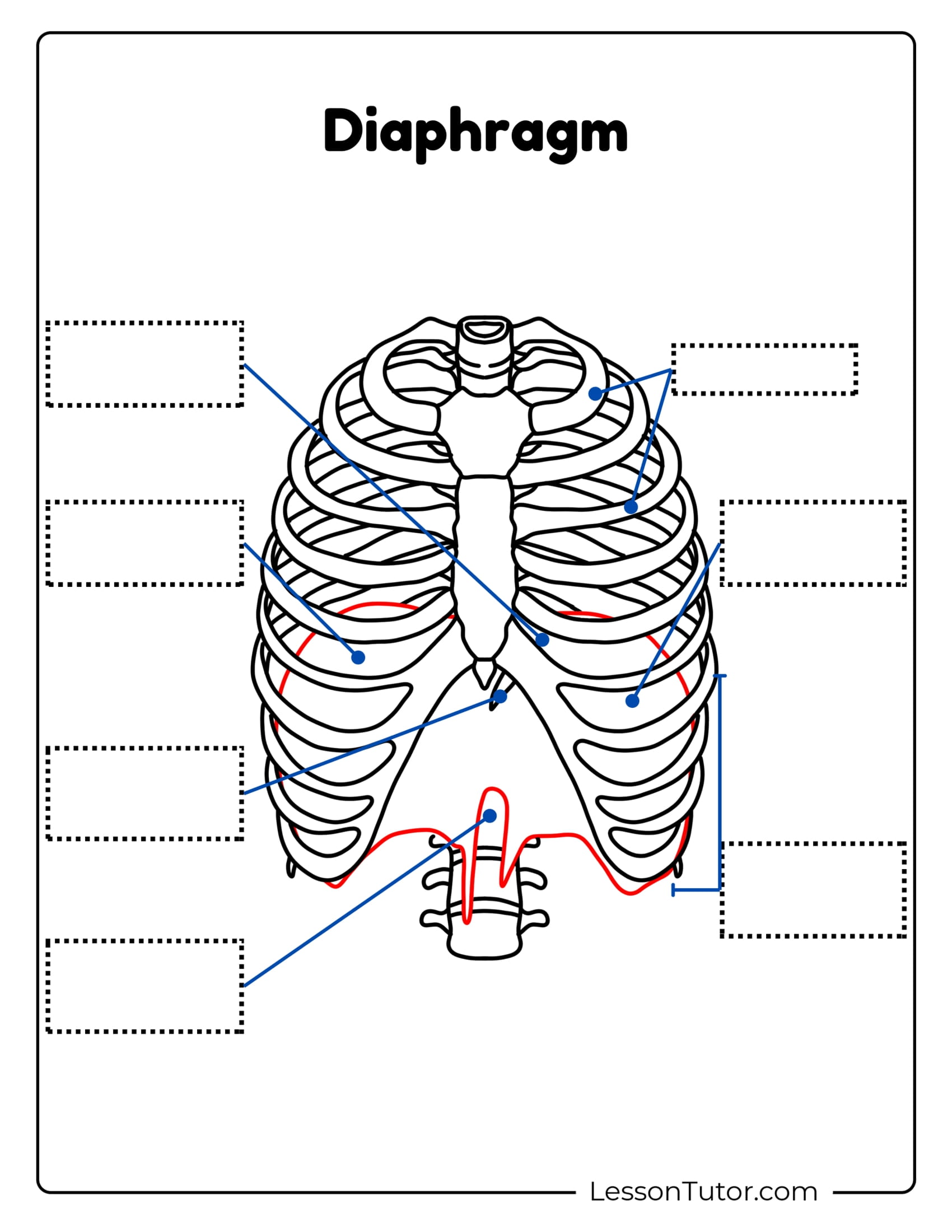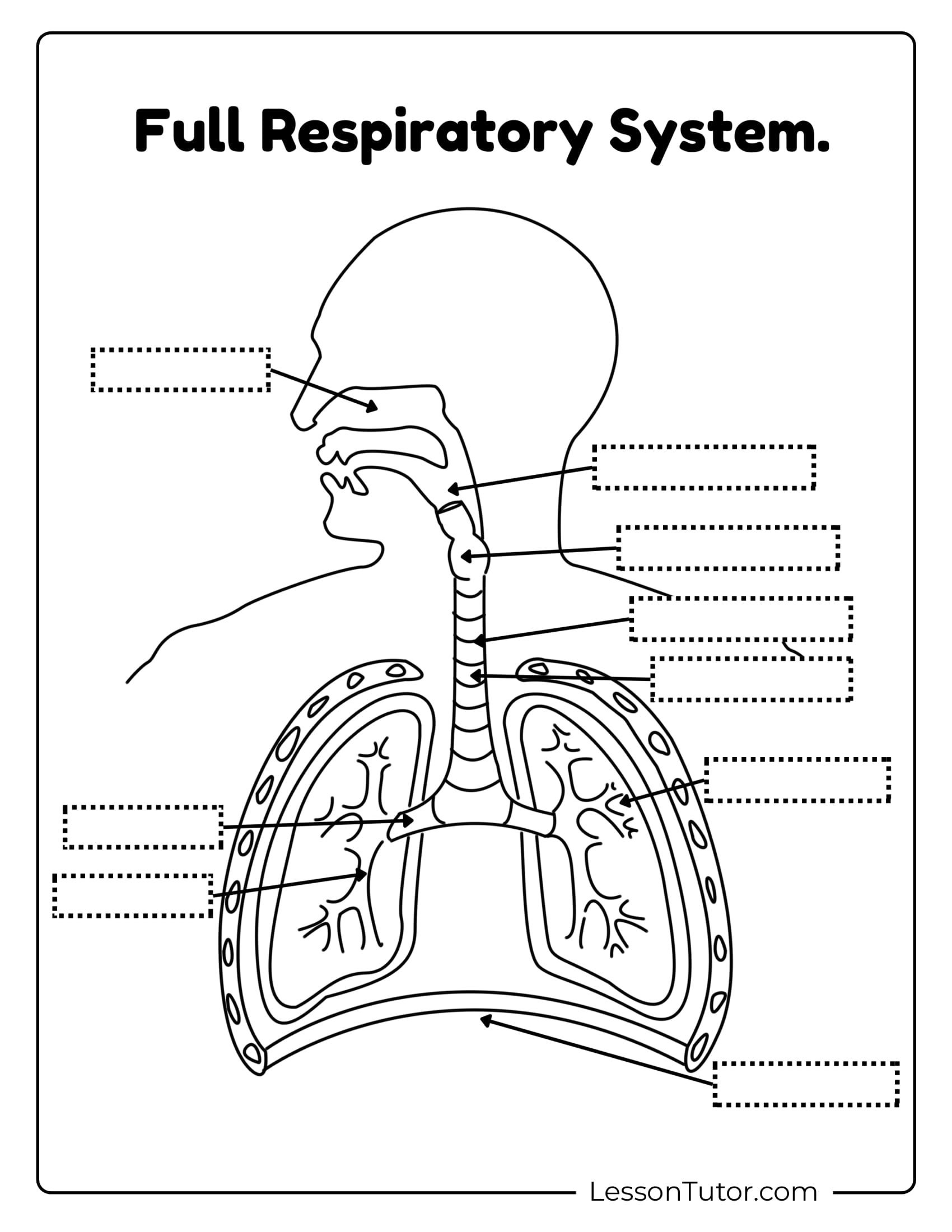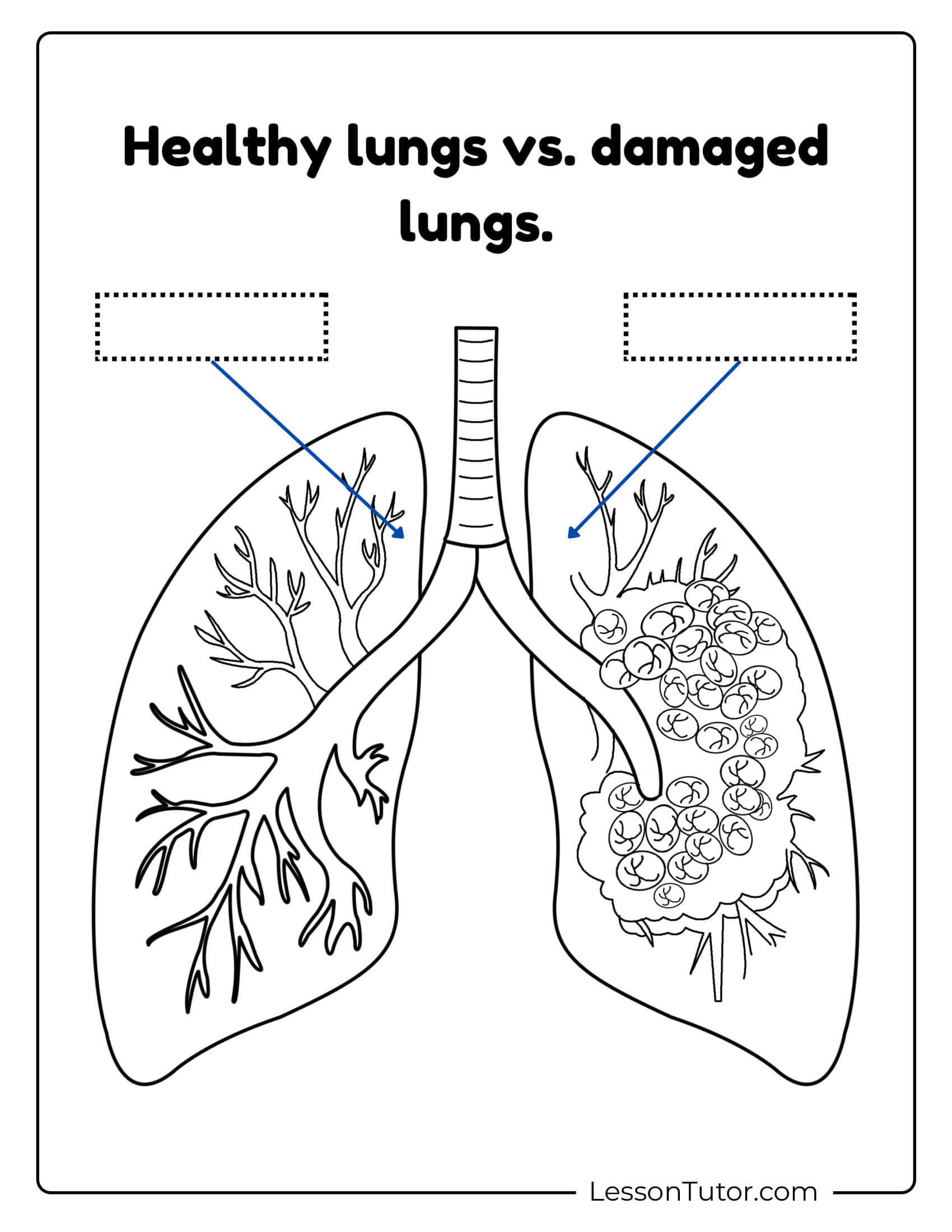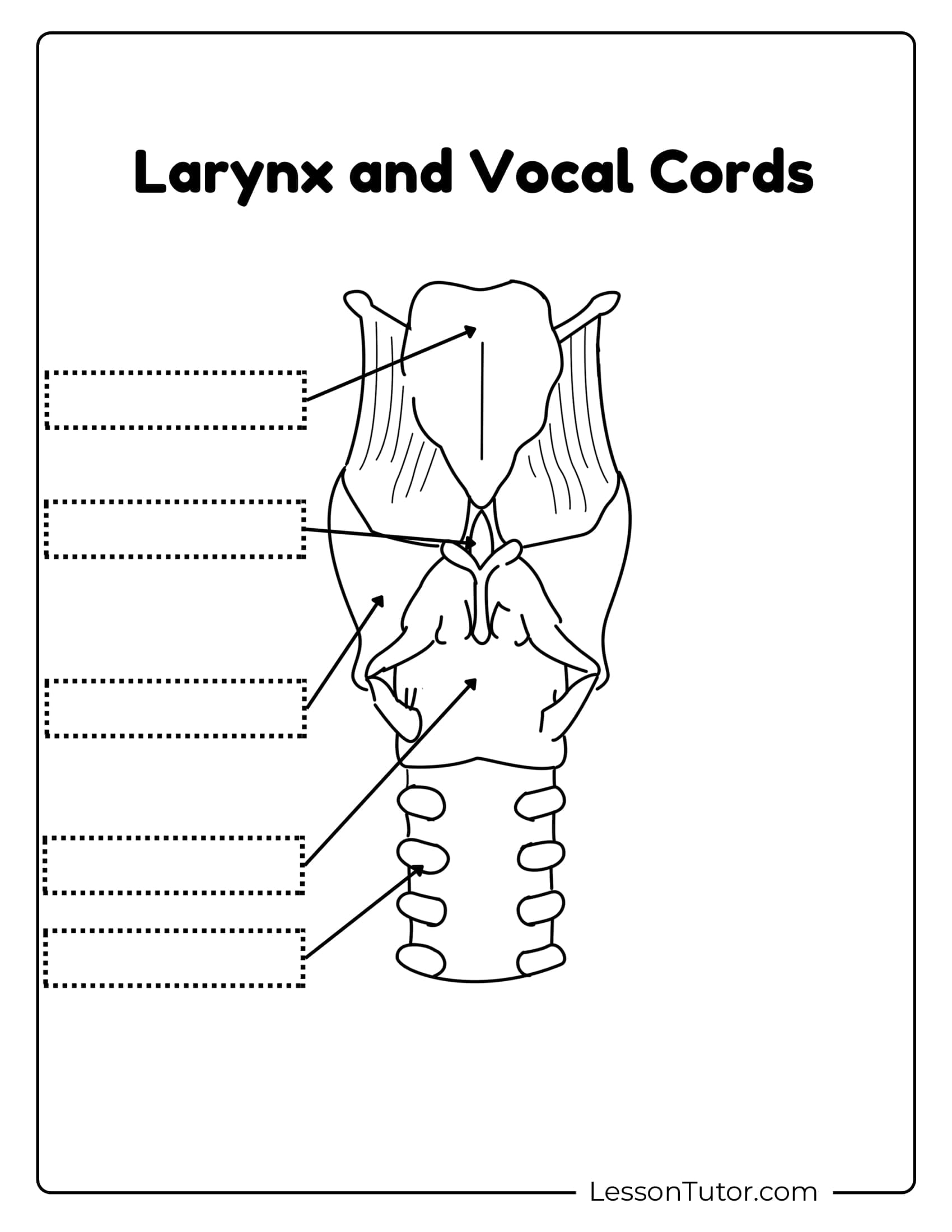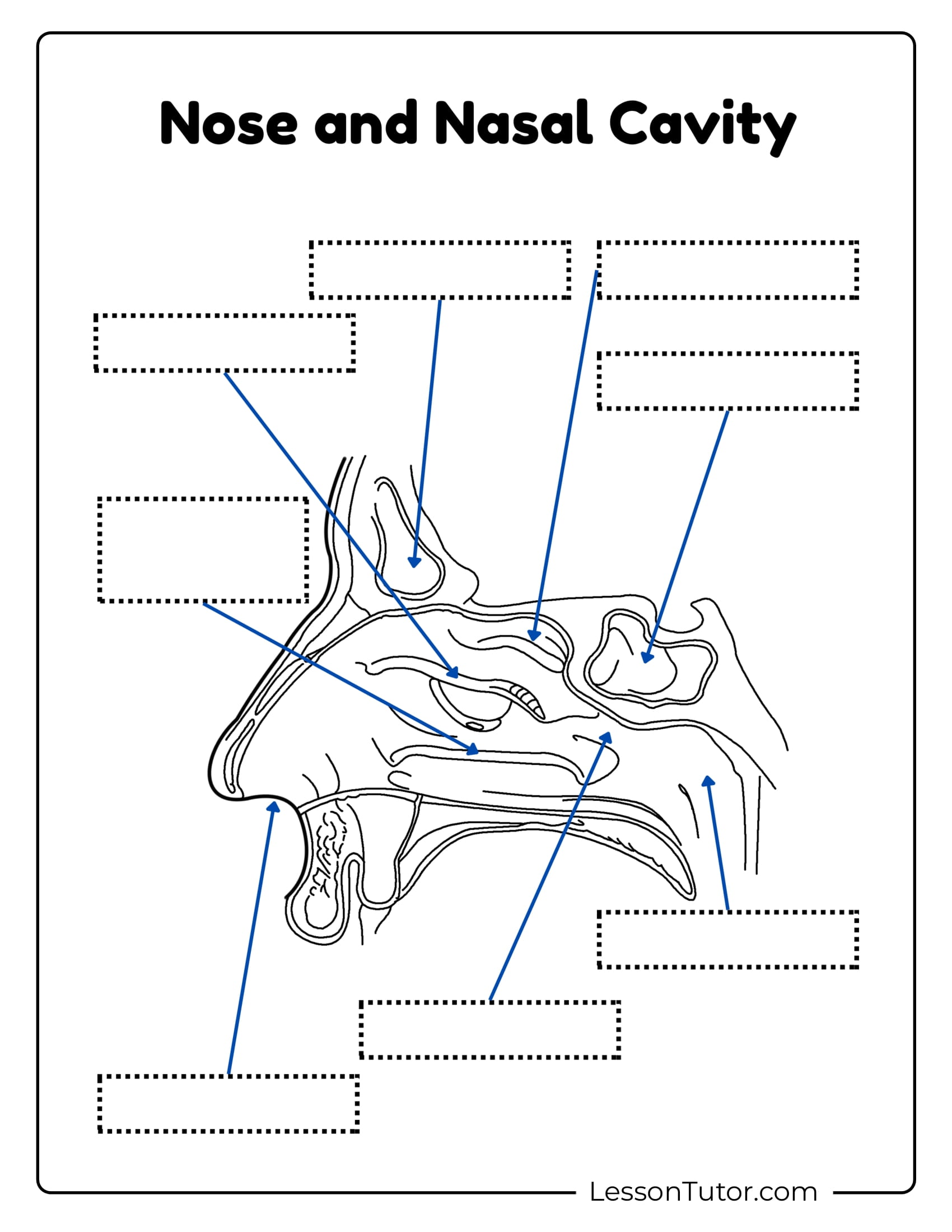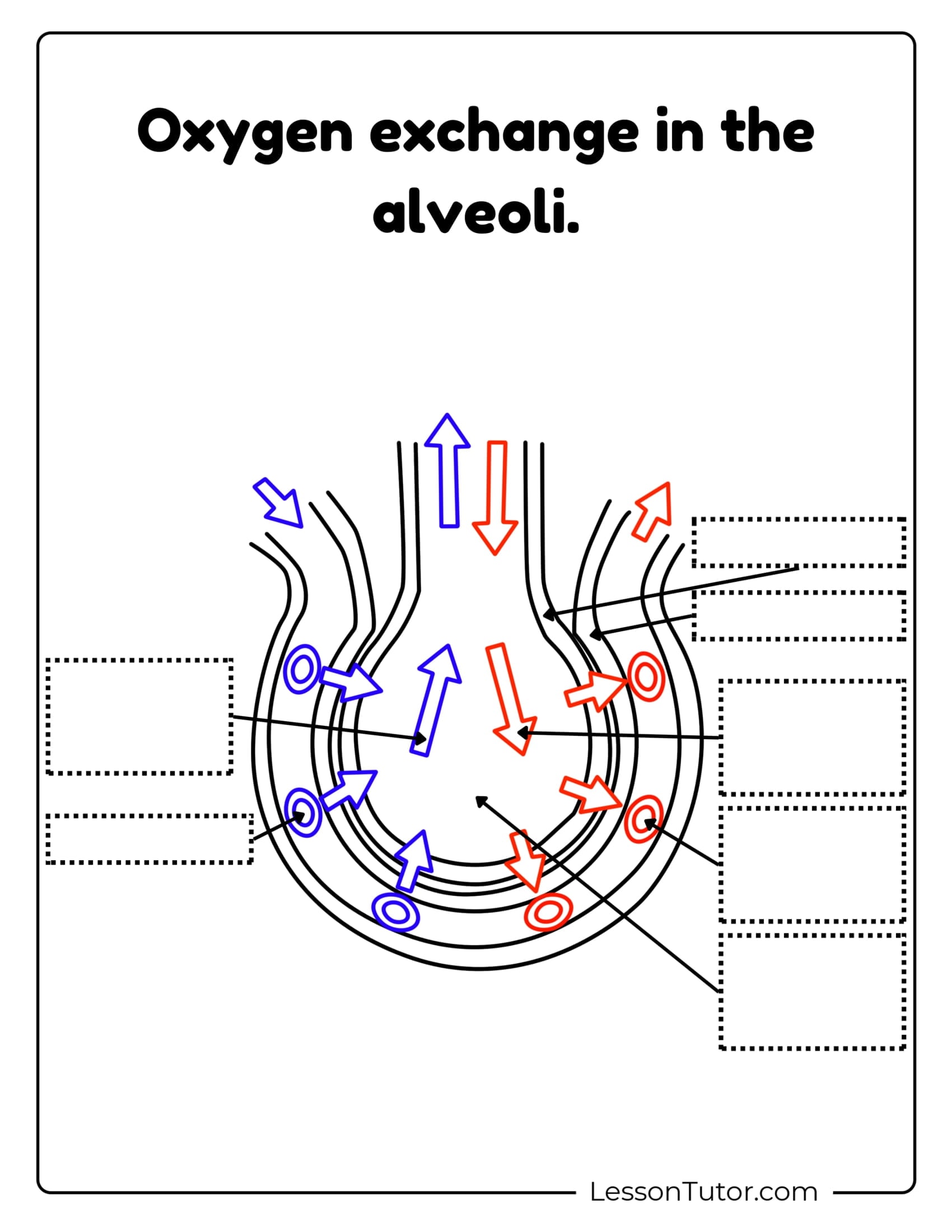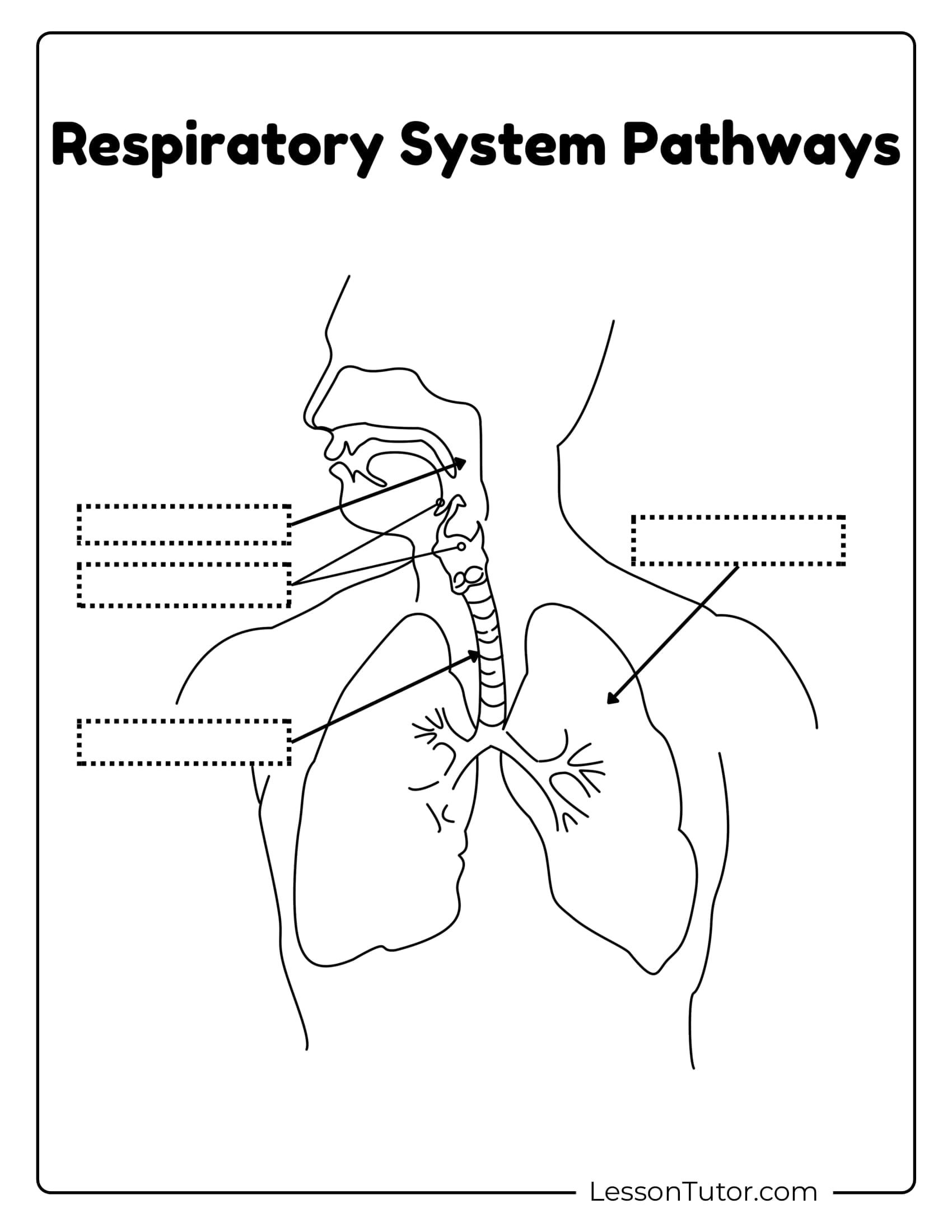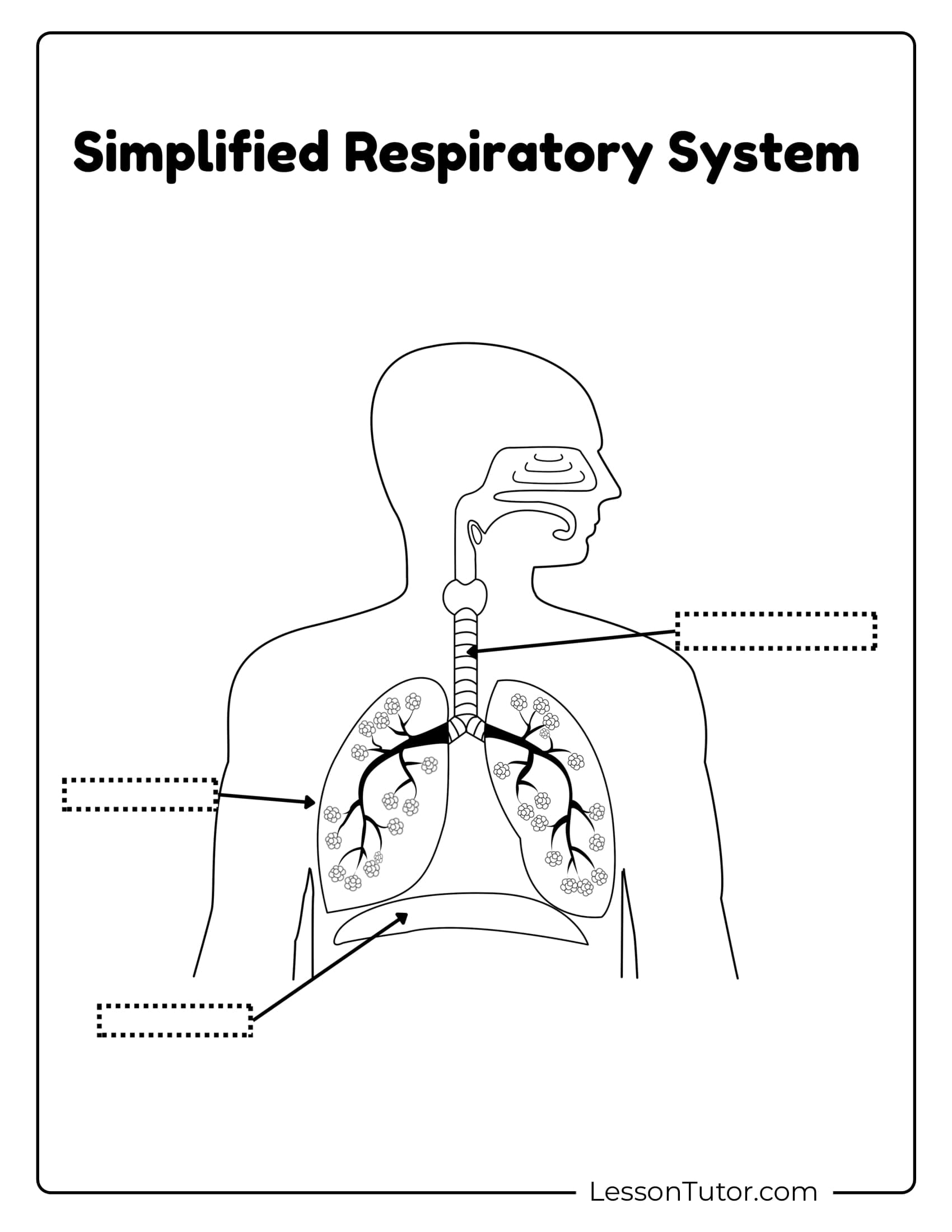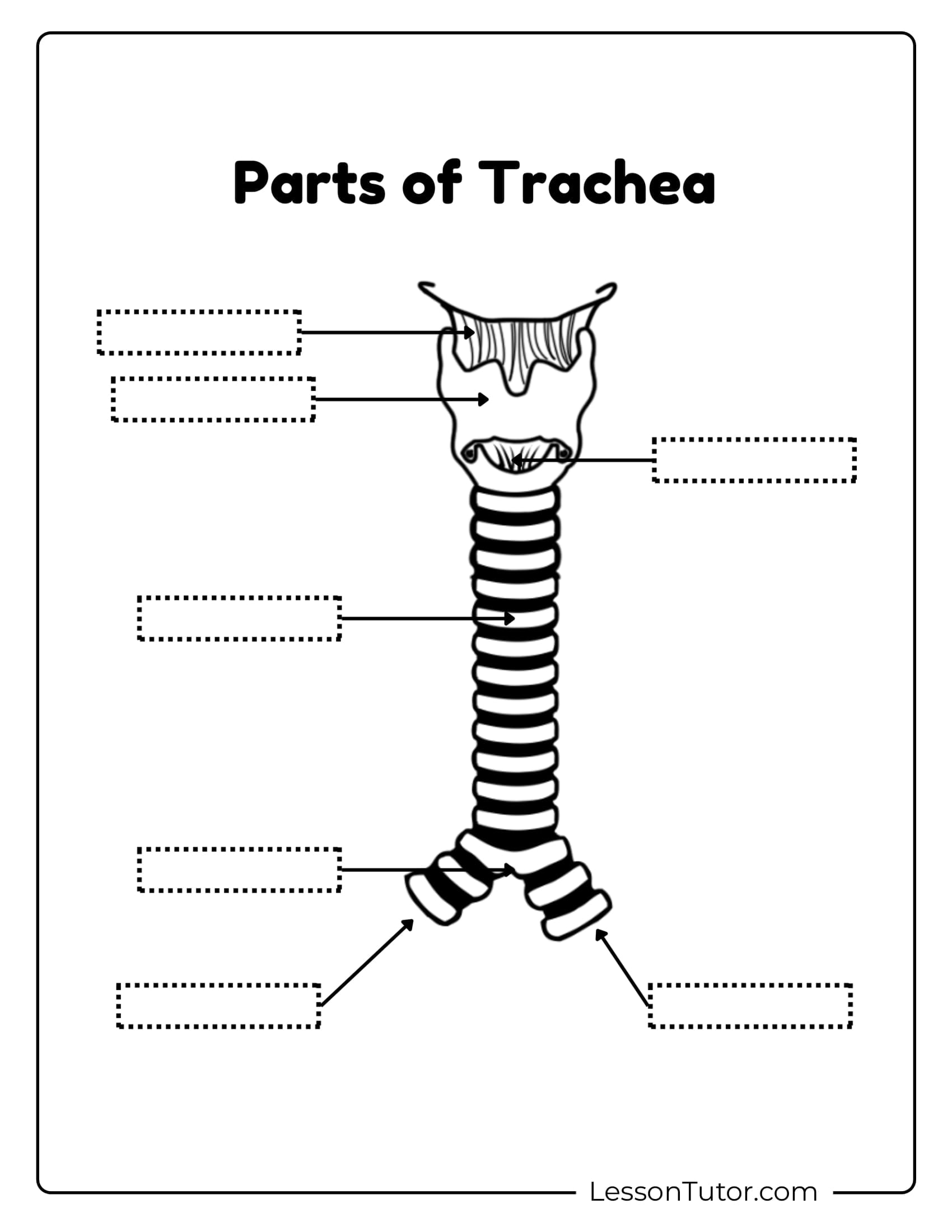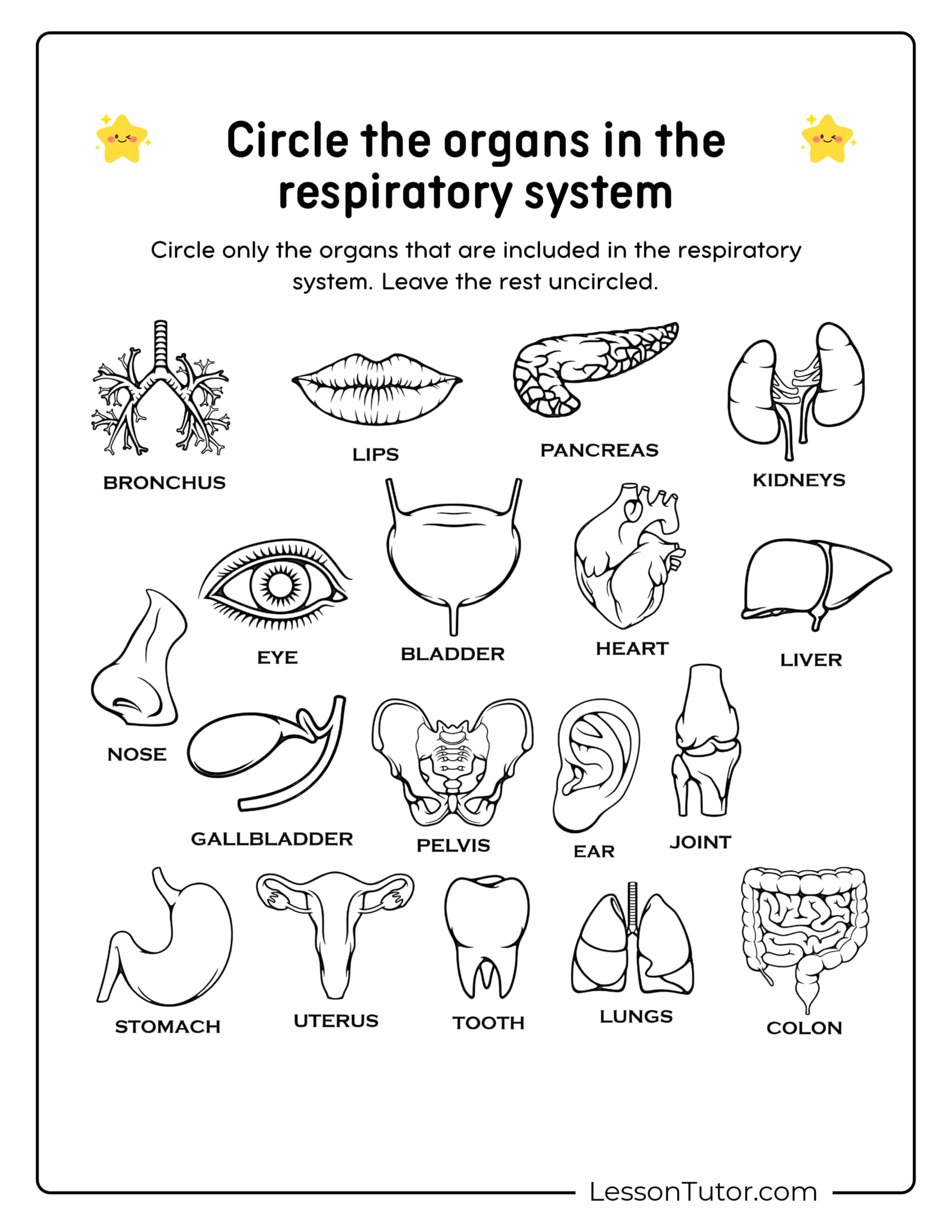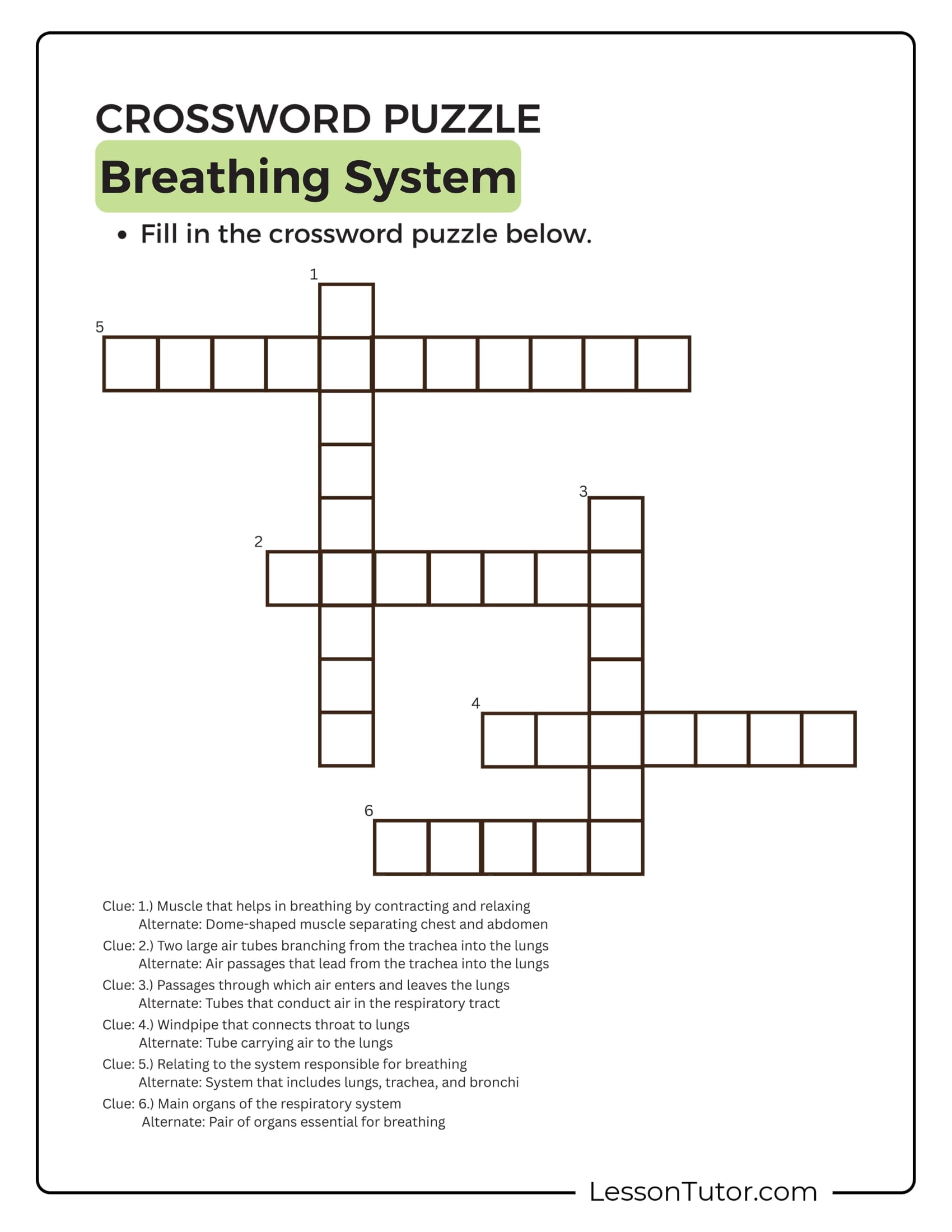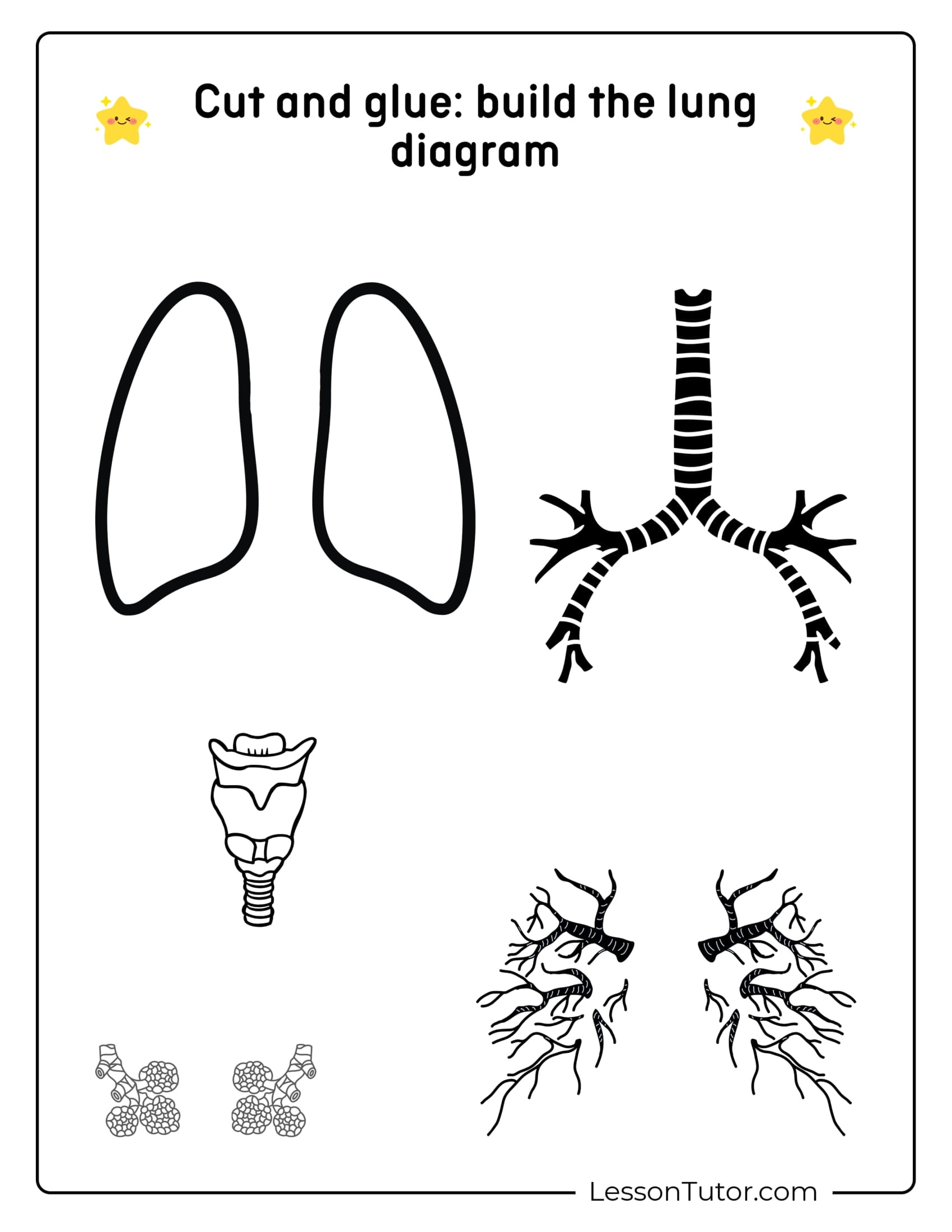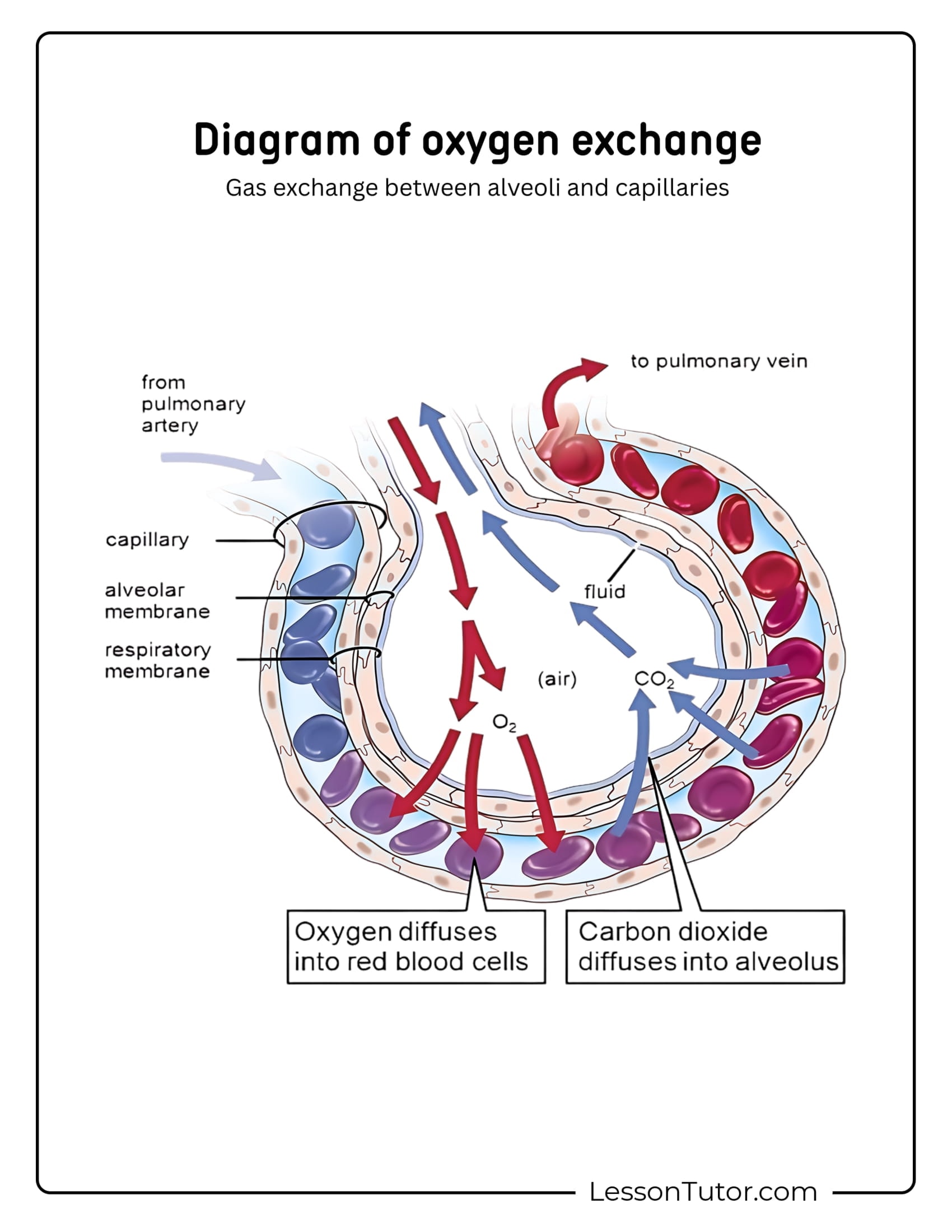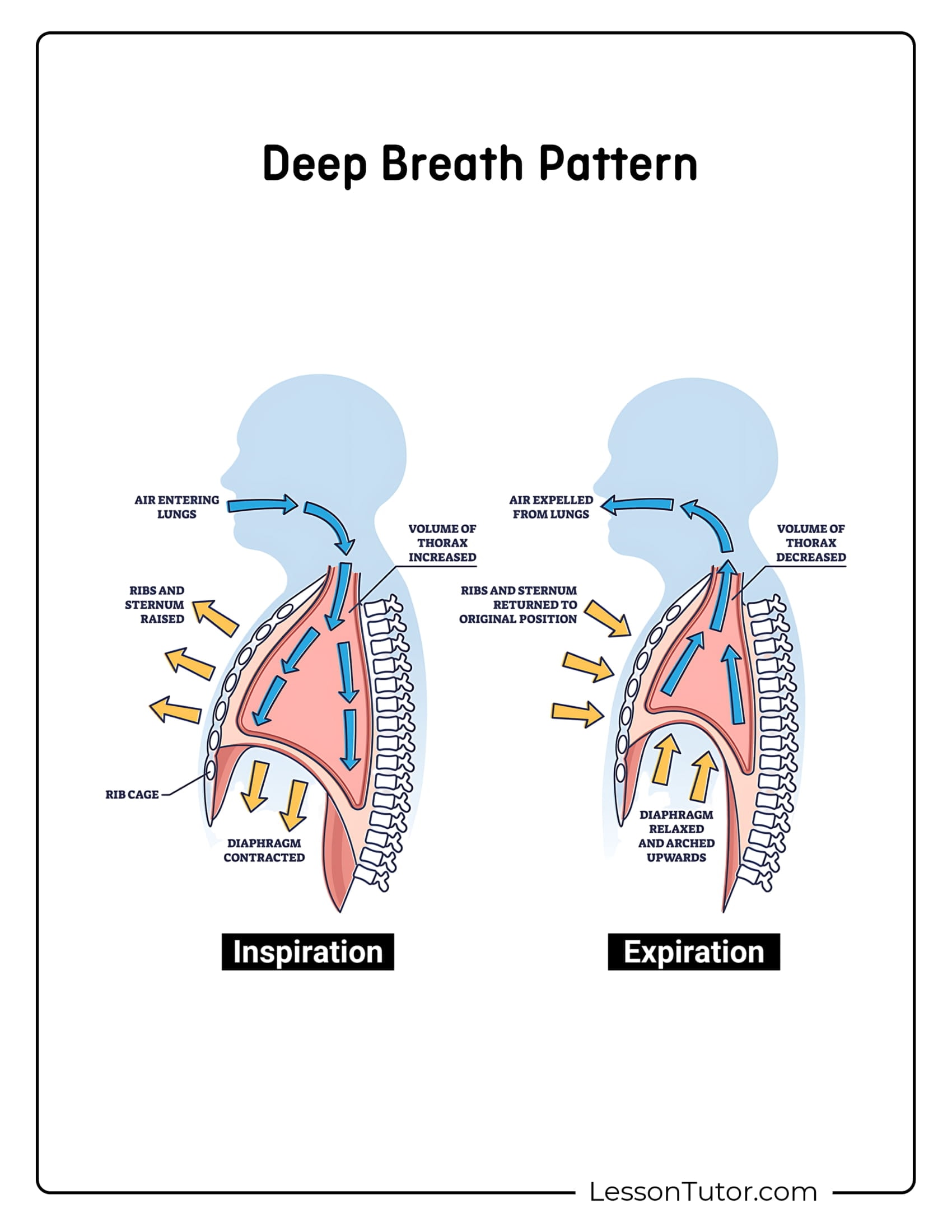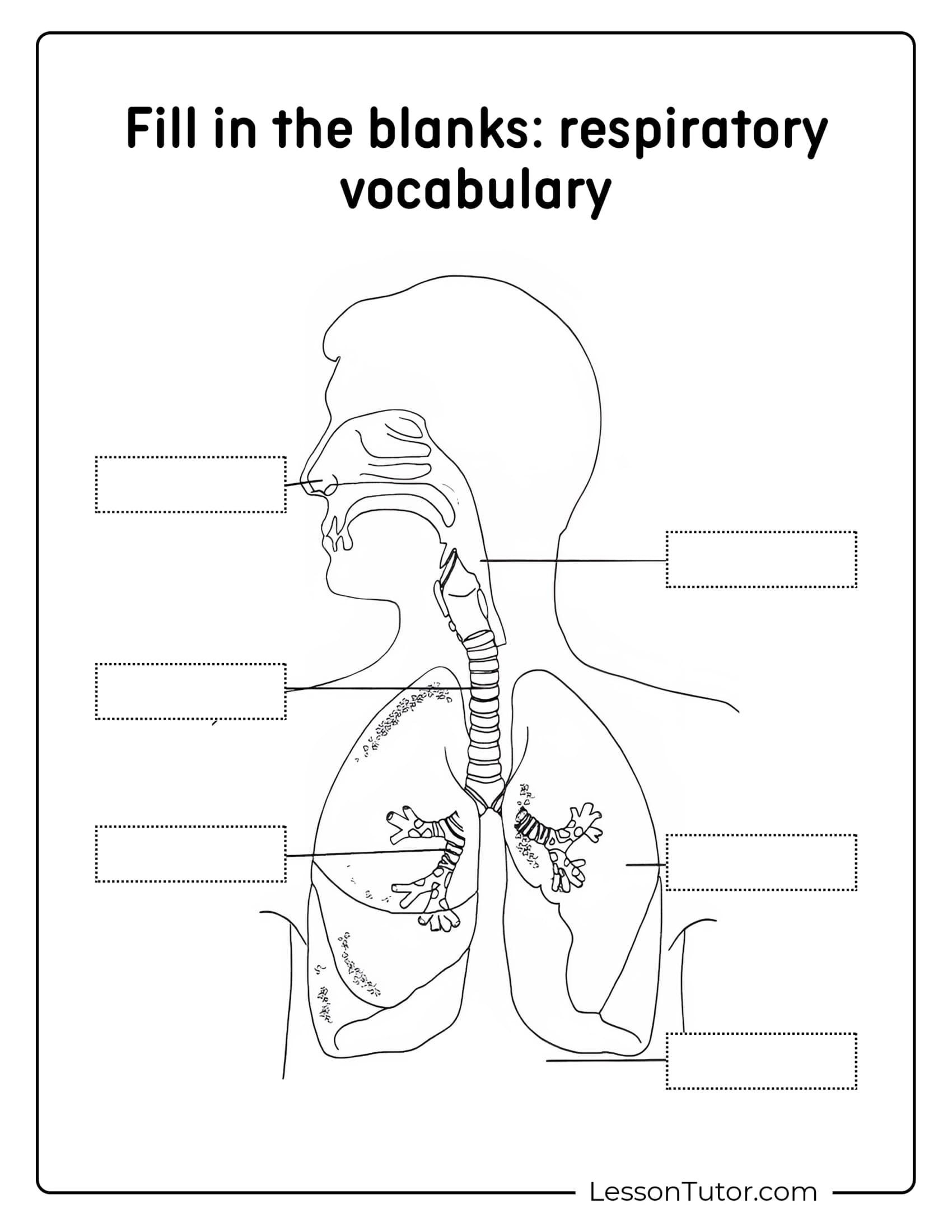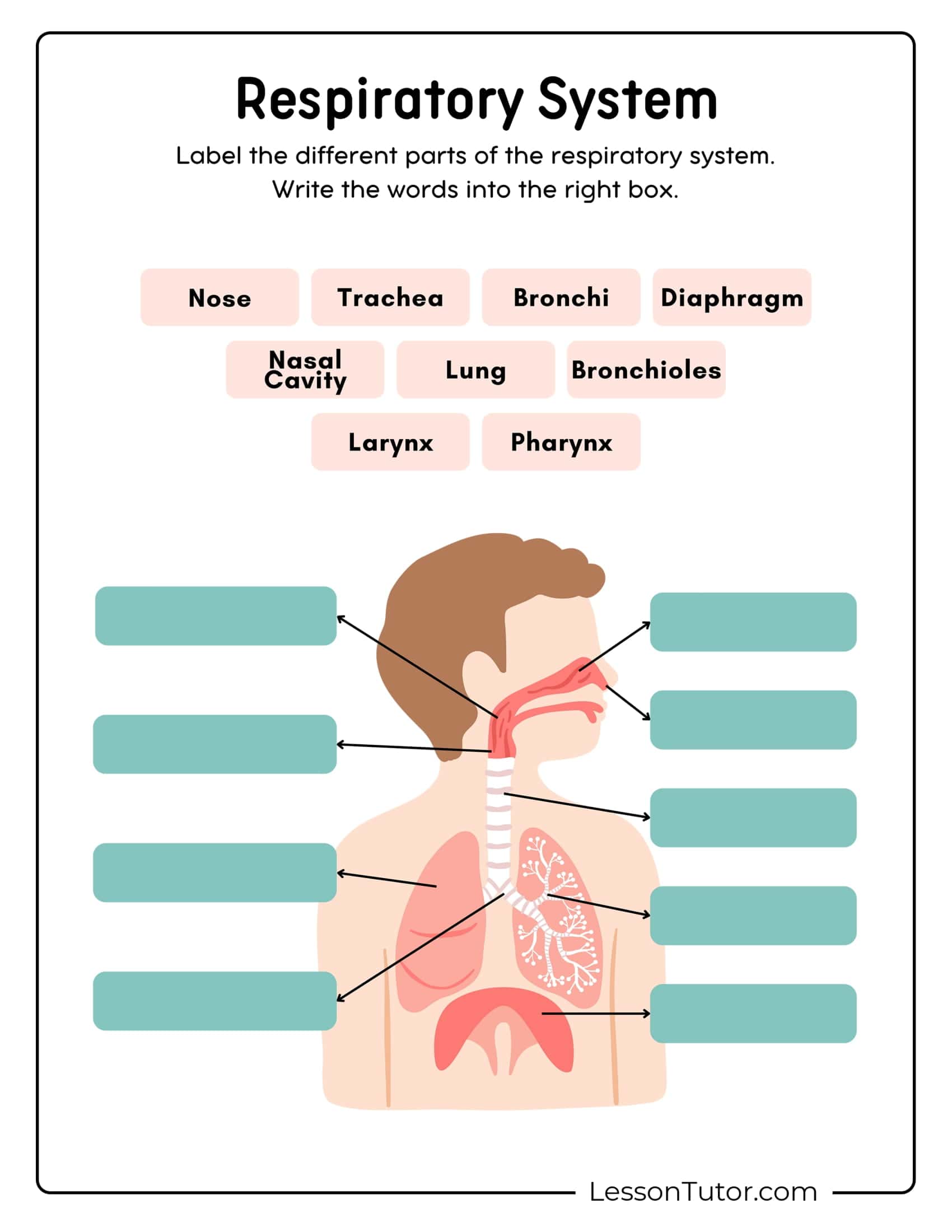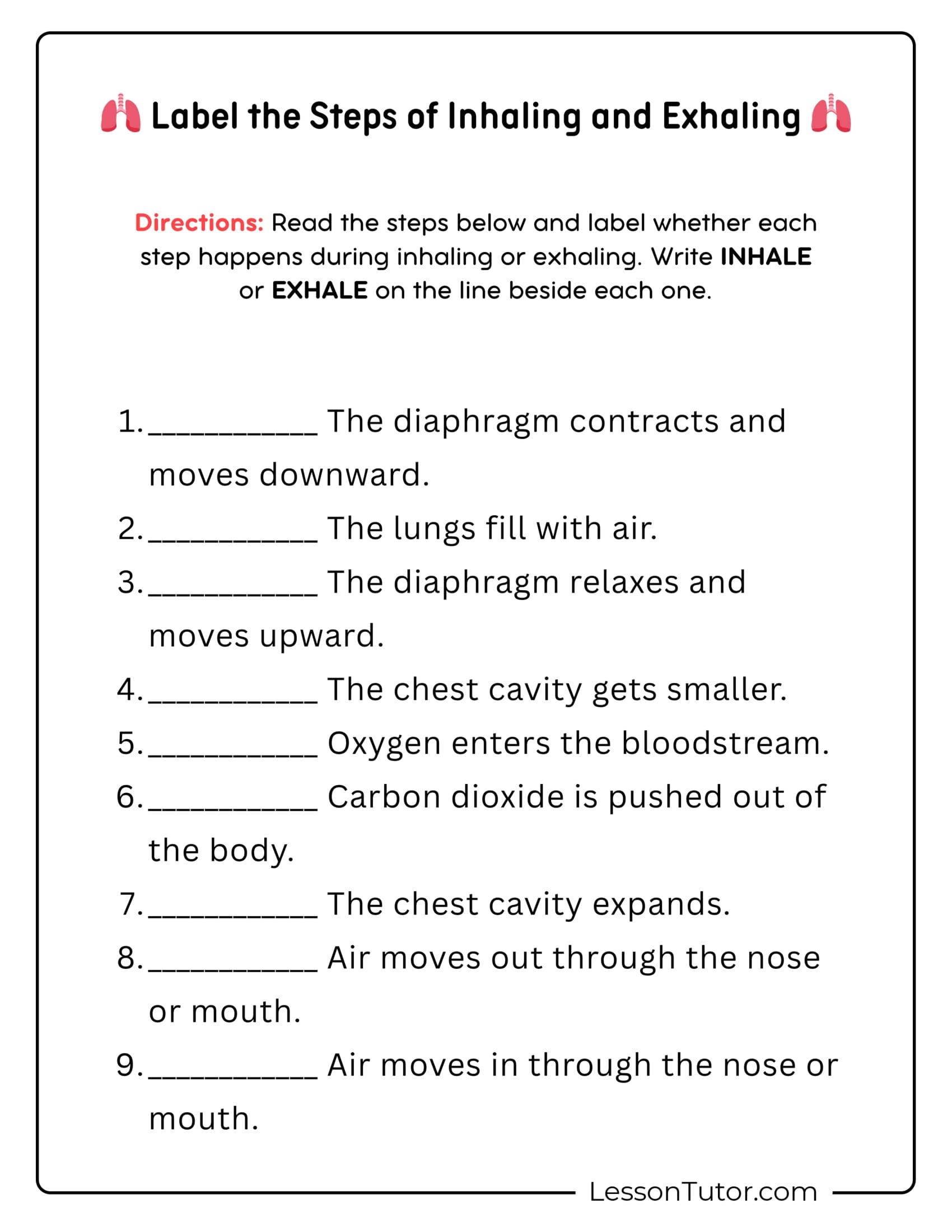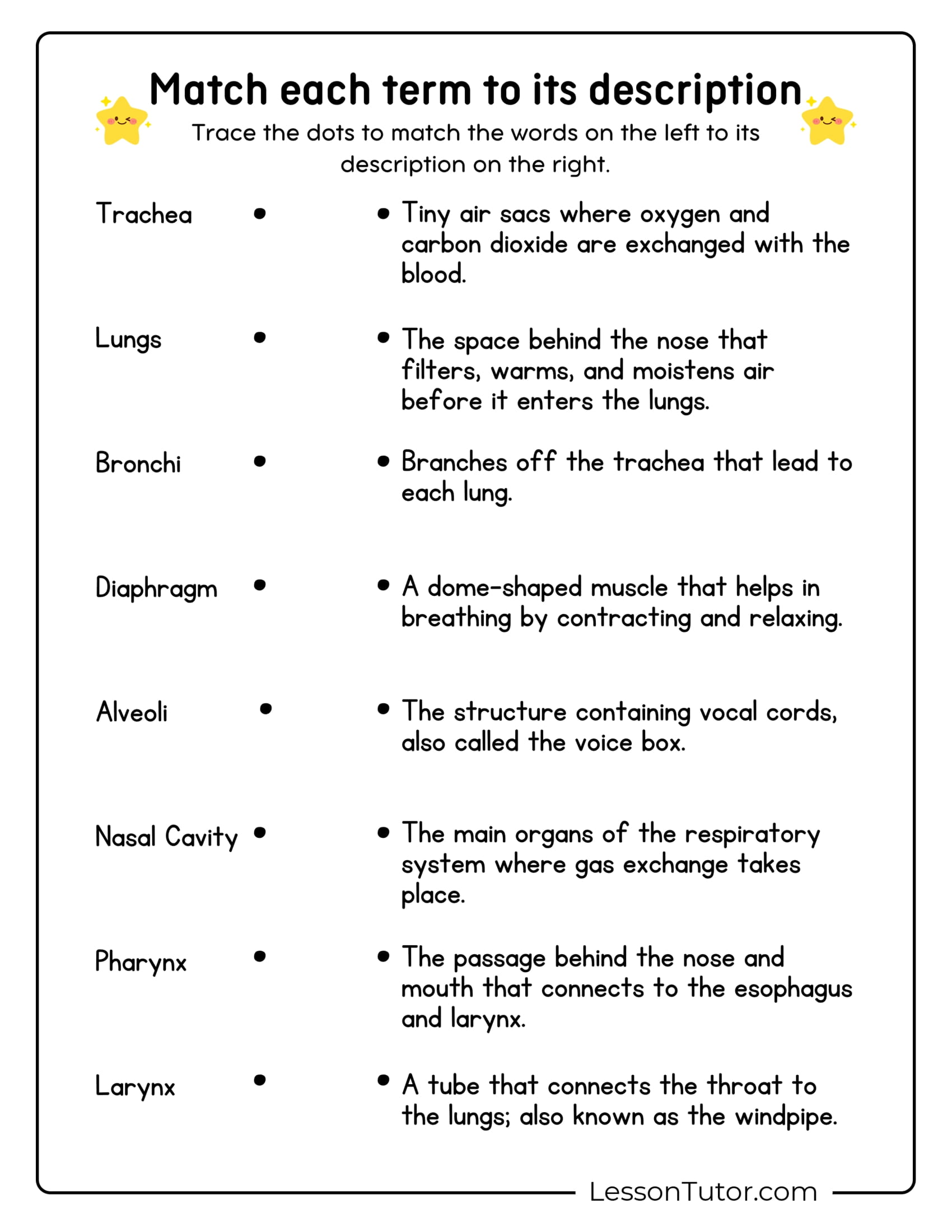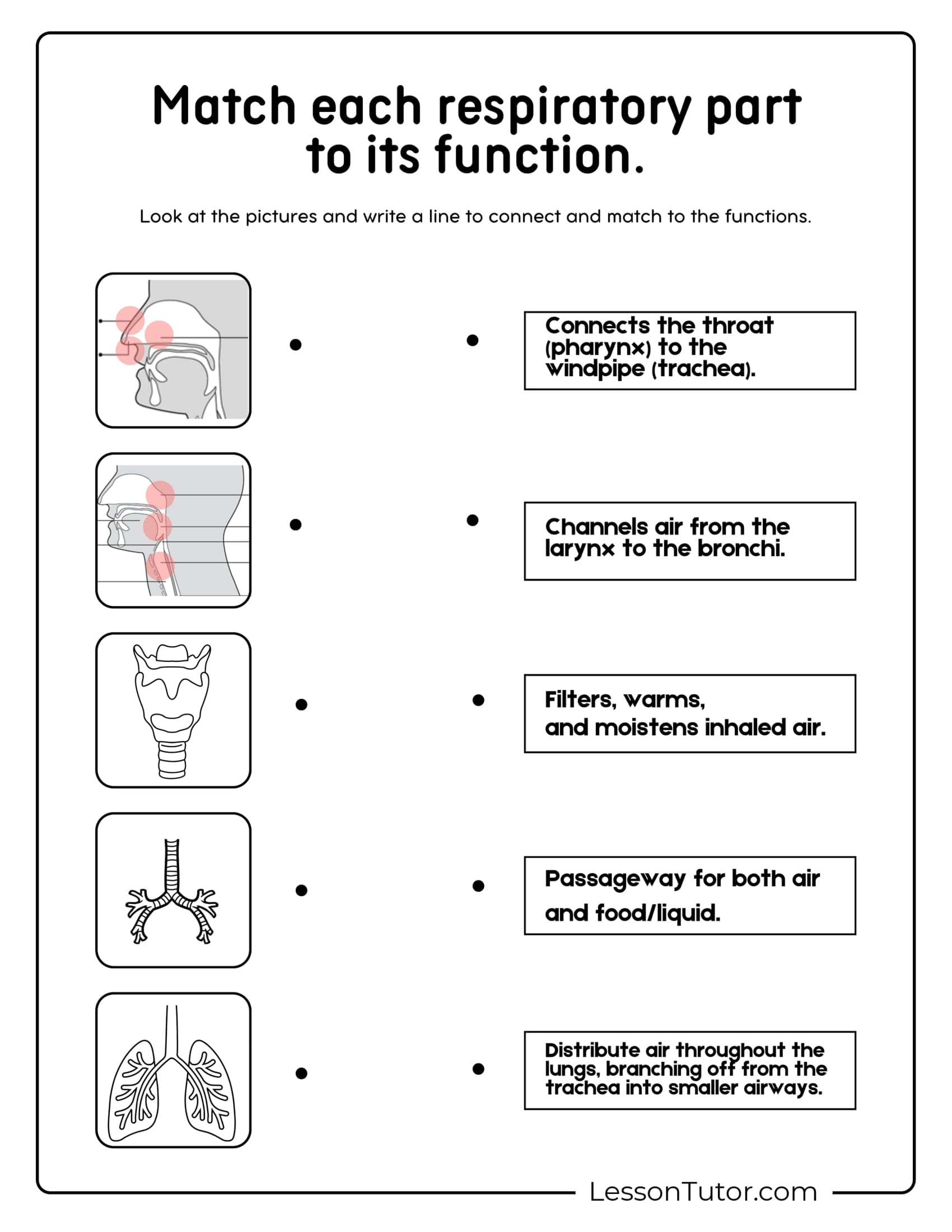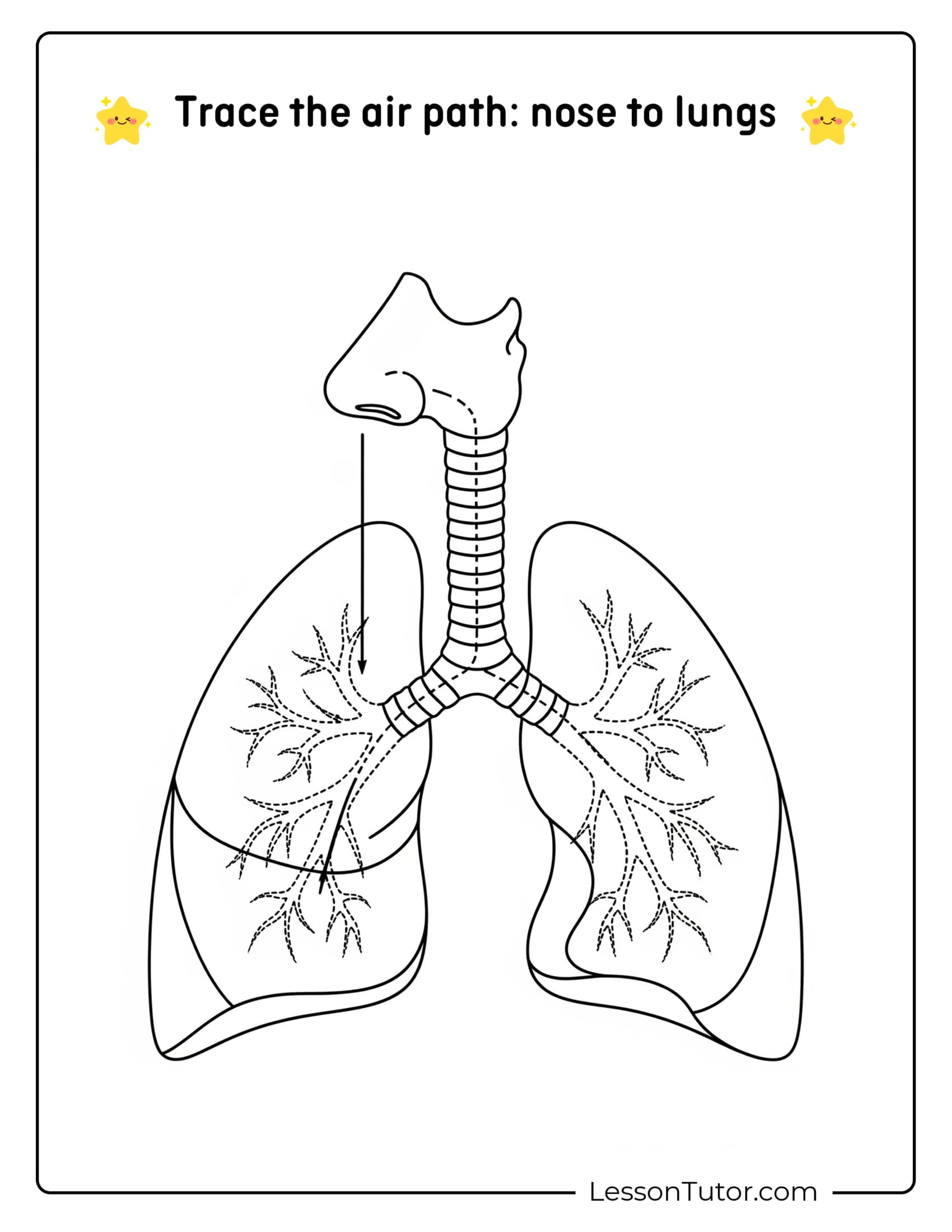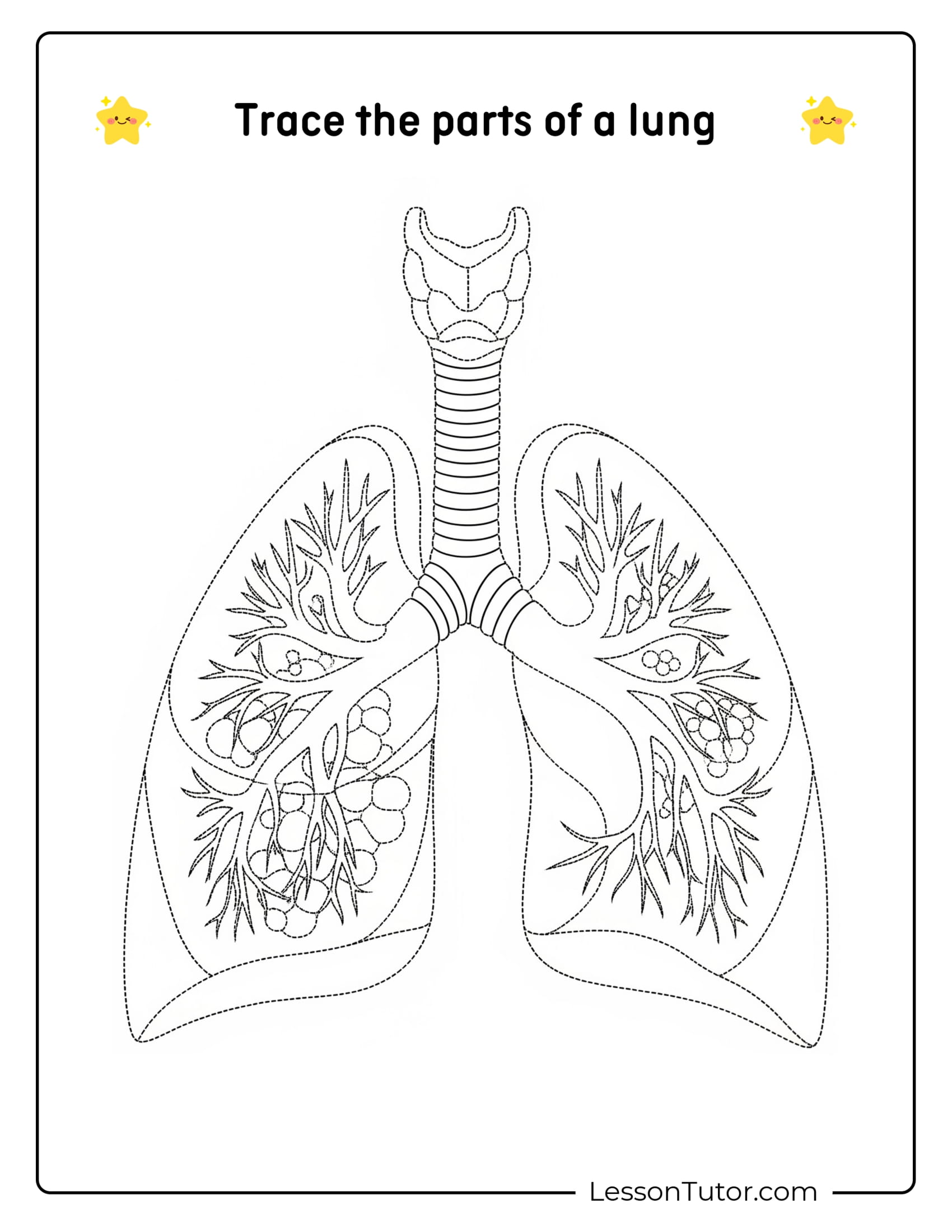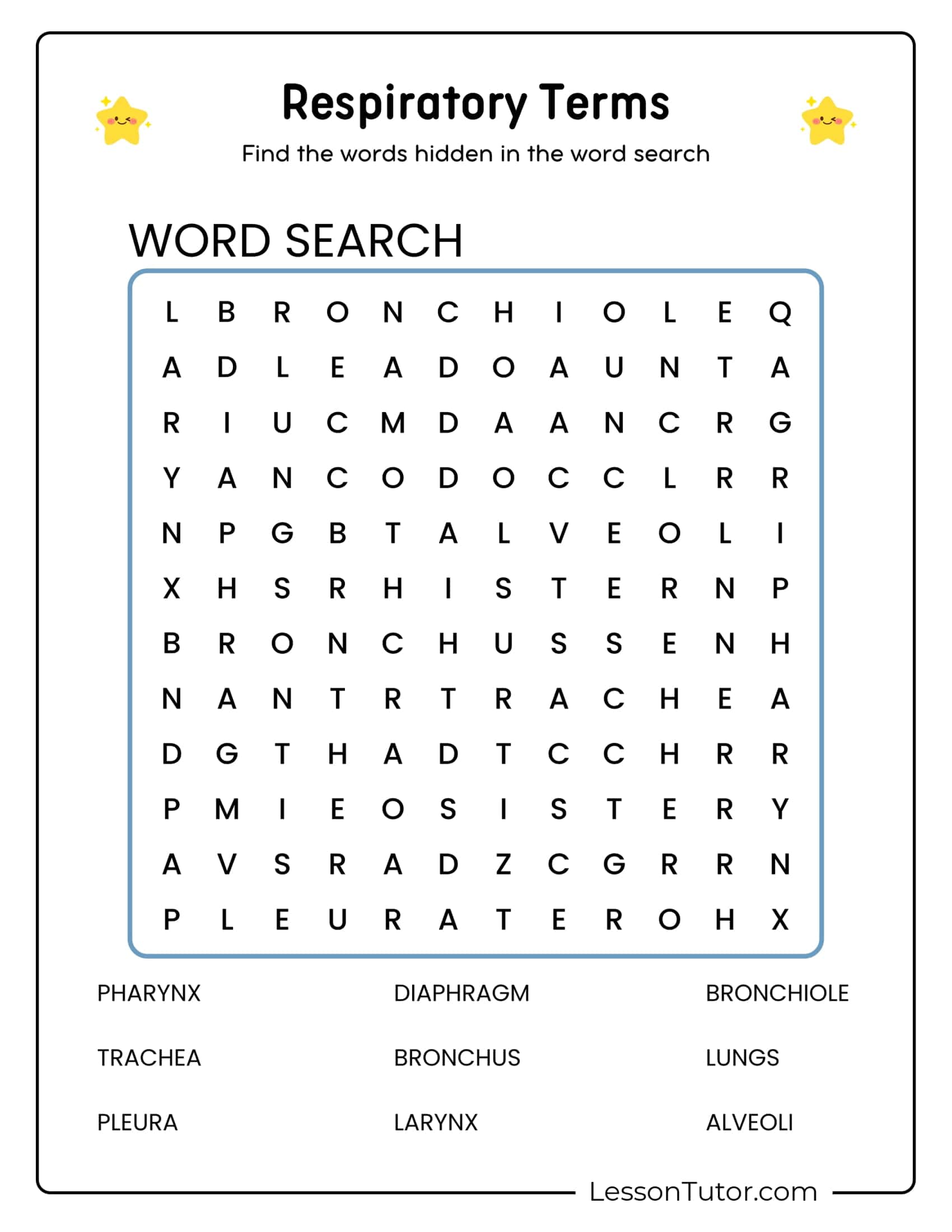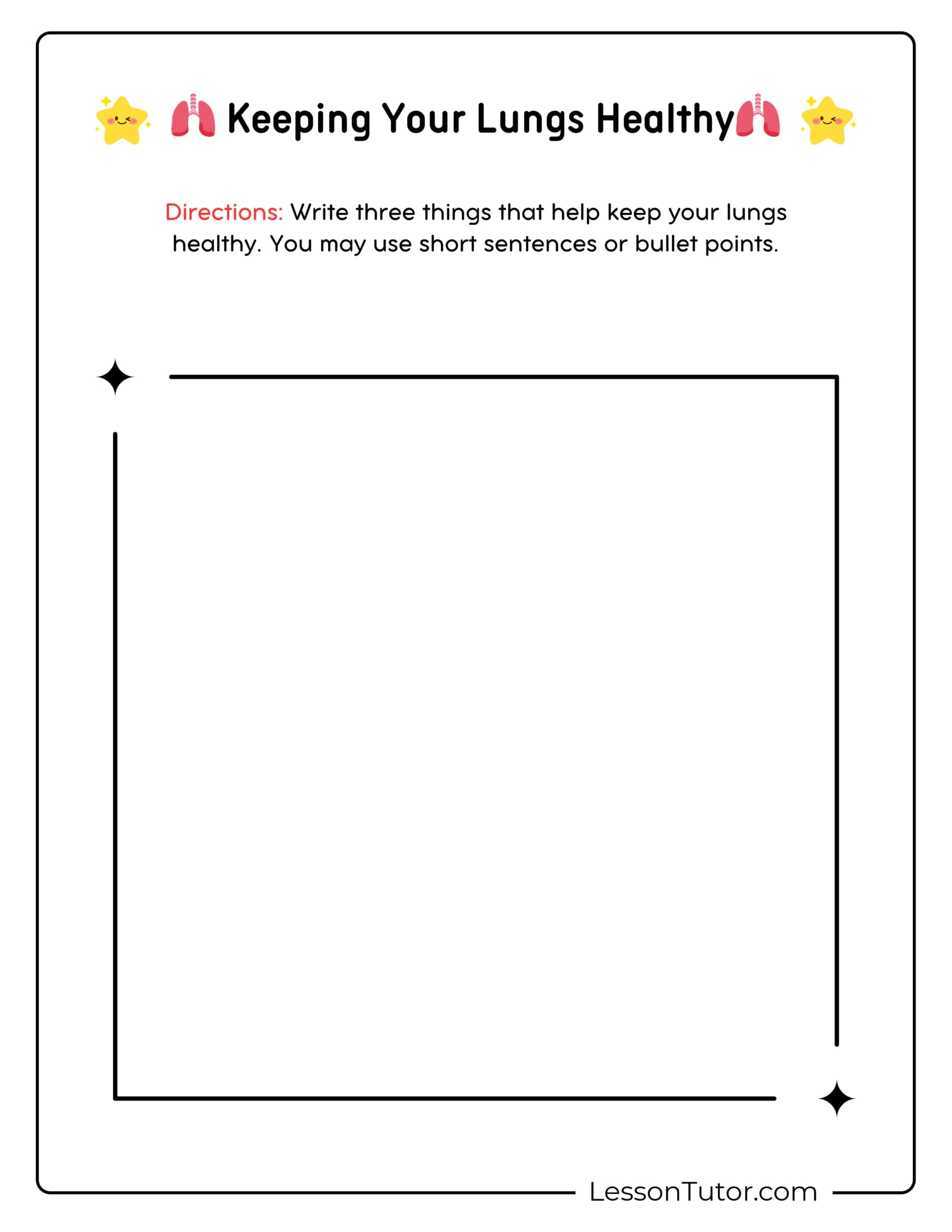Embark on a breathtaking journey into the wonders of the respiratory system with this exclusive collection of 30 educational worksheets, perfect for students, teachers, and curious minds alike! This set provides a hands-on approach to learning, featuring a complete respiratory system with blank spaces for labeling, a detailed pair of lungs for identifying lobes, and a trachea with spaces to label cartilage rings. Whether it’s a fun addition to a classroom lesson or an engaging way to explore the marvels of human anatomy, these worksheets promise hours of informative and interactive learning!
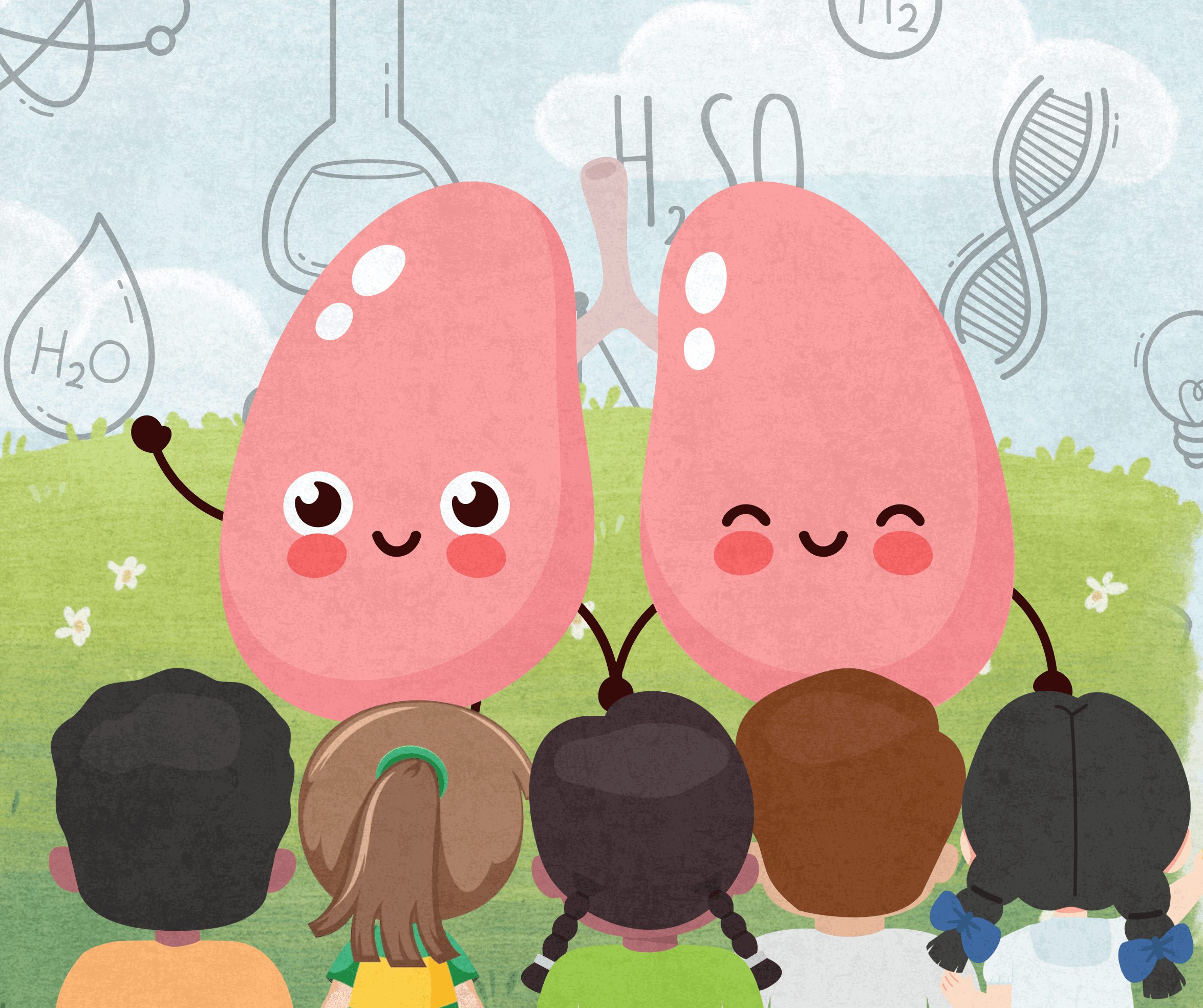
Step into the fascinating world of the respiratory system, where science, anatomy, and discovery come together in a breathtaking adventure! This exclusive collection of 30 expertly designed, high-resolution PDF worksheets, perfectly formatted for A4 paper, is ideal for curious learners and science enthusiasts. Free to download and print, these and get ready for hours of engaging, breath-taking discovery for all.
Craft Ideas To Do With Respiratory System Worksheets
This set also includes cross-sections of the lungs and the respiratory system, complete with labeling blanks for enhanced learning. Detailed diagrams such as the larynx and vocal cords, bronchial tree branches, and oxygen exchange in alveoli allow for a deeper understanding of the respiratory system’s structure and function. Whether you prefer brain-teasing puzzles, interactive quizzes, or detailed activity sheets, this collection of Respiratory System worksheets offers endless educational fun.
More Free Printable Worksheets
If you're looking for more related worksheet goodies that kids love, we think you'll particularly enjoy these worksheet collections:






